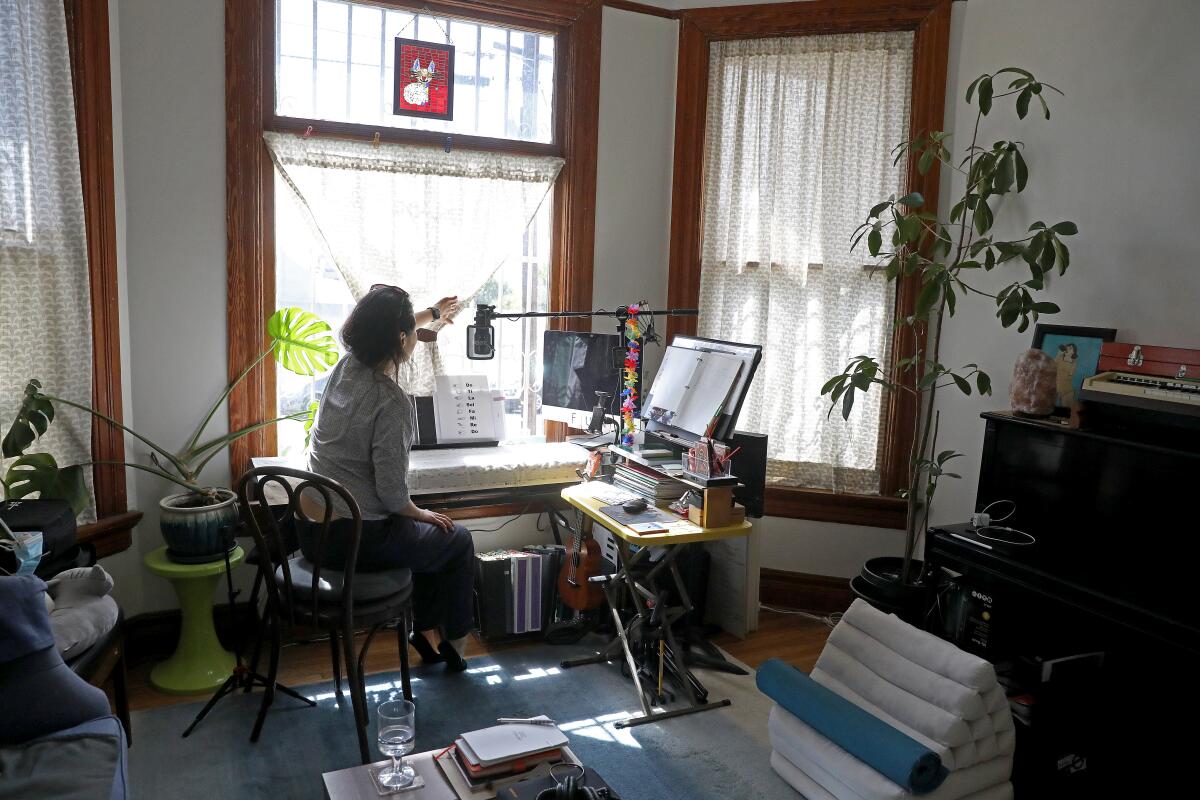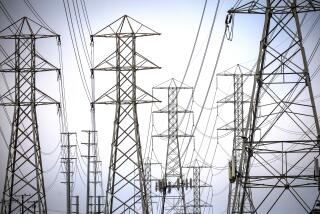How to beat the Southern California chill without raising the gas bill

For most of Southern California, it’s West Coast cold out there — you know, a crisp mid-50 degrees during the day and in the 40s at night. It’s enough to make you want to turn on your heater, but the thought of a punishingly high gas bill keeps you from going anywhere near the thermostat.
The hesitation is understandable, considering that natural gas prices have more than doubled since December.
Although there are several programs available to cut your gas bill or at least make payments more manageable the surest way to pay less is to use less gas.
But it’s practically bone-chilling by our thin-blooded standards, and temperatures are continuing to dip in some parts of Southern California. Los Angeles County’s health officer issued another cold weather alert — for Lancaster, Mt. Wilson, Santa Clarita Valley, Pomona, Woodland Hills, and west San Gabriel Valley — in effect until Jan. 24.
Even if you’re staying inside to avoid the cold outdoors, you could still find yourself shivering. Here are some ways to stay warm without being so dependent on your heater.
Warming up your body
The human body has a built-in heater of sorts — heat is a byproduct of our cells’ (inefficient) metabolic processes. The ability to regulate your body temperature is what makes us “warmblooded.”
But the body loses heat too, and you feel cold when you generate less heat than you lose to the environment, Gang Sun of UC Davis said. This type of heat loss is called radiation heat loss, said Sun, a professor with the department of biological and agricultural engineering.
He said popular fabrics that can reduce radiant heat loss in regular thicknesses are made by brands such as 32 Degrees, Under Armour or Northface.
The best way to trap that body heat, experts say, is to dress in layers.
Dressing in multiple thin layers of clothing traps warmer air near your body better than a single thick garment does.
It’s also easier, and doesn’t cost anything, to put on another thin layer to get warmer.
Outdoor retailer REI suggests a three-layer approach for cold-weather activities, which for many longtime Southern Californians would include working from home in a drafty house. The base layer is designed to wick away sweat, the middle layer traps heat and the outer layer protects you from the wind, like what’s pouring through the gaps in your windows.
Transplants from the East Coast know all about long underwear, but this may be an alien concept to many Angelenos. If you’re going that route, REI advises that synthetics and merino wool are the best choices. Another option is silk, which is lightweight and well-suited for non-strenuous activities (see: working from home in a drafty house).
You will note that cotton is not on REI’s list. That’s because the material is “breathable,” which is great in summer but not so great when you’re trying to hold in your body heat.
Keeping your house’s heat indoors
You’ve turned on your wall heater or furnace long enough to warm up a room; now, what can you do to retain the heat? A good place to start, the Natural Resources Defense Council says, is to close the cracks and gaps in your home that allow heat to escape.
For example, check your baseboards and attic hatches for openings that you can seal to make your living space less drafty. Weather-stripping your windows and caulking leaks around their frames are two good ways to seal openings that could let in cold air or let out the heat.
If the bottom of your front door is letting in cold air, consider purchasing a draft guard that covers the gap. If you can’t purchase one, use a towel or blanket to cover the door.
When you’re starting the day, open your curtains or blinds to let the sun’s heat in and warm up your home. When the sun starts to go down, close your curtains or blinds to provide a little bit of insulation.
Energy-saving tips
If you have a wood-burning fireplace or pellet-burning stove, the U.S. Department of Energy says, now might be a good time to use it. The thermal energy generated by the combustion radiates into a room, potentially reducing the need to raise the thermostat.
But a fireplace or a pellet-fueled stove will save energy only if it is efficient — that is, if it produces more heat than it draws out of your house and shoots up the chimney. Consumer Reports suggests sealing and weather-stripping the chimney to reduce leakage, as well as installing a chimney liner, tempered glass doors and a fireplace heat exchanger, “which warms the air and sends it back into the room.”
The smoke and flames from a fireplace pose risks too. That’s why Consumer Reports advises you to have the chimney inspected and cleaned yearly, and to use a fireplace screen to contain sparks.
A lot of people rely on portable space heaters, and it’s more energy efficient to heat up just the room you’re occupying than an entire house or apartment. But the top prize for energy efficiency goes to electric blanket users. The Energy Department has deemed the electric blanket more cost effective than space heaters.
Once you’ve found alternative ways to get warm and stay that way, the simplest way to cut your utility bill is to lower the temperature on your thermostat and water heater.
PG&E says you can cut your heating bill by about 2% for each degree that you lower the temperature on your thermostat. Turning down the temperature from 70 to 65 degrees, for example, saves about 10%.
You can also turn down the temperature of your water heater to 120 degrees — that will reduce the amount of energy it takes to produce and maintain your hot water. The U.S. Department of Energy offers a video tutorial on how to properly set the water heater temperature.
If you’re a homeowner with some ambition, the U.S. Department of Energy suggests making the switch from a furnace and air conditioner to a heat pump. Heat pumps use electricity to transfer heat from a cool space to a warm space, rather than generating the heat (furnaces generate heat, for example). The agency says the most common type of heat pump is the air-source heat pump, which transfers heat between your house and the outside air.
This heat source can reduce your electricity use for heating by approximately 50% compared with furnaces, baseboard heaters and other types of electric resistance heating, the department said.
Upgrading to a heat pump can be a costly purchase, however, with prices running into the thousands of dollars. Thanks to the Inflation Reduction Act, households buying an electric heat pump can claim a 30% federal tax credit, up to $2,000 in value.
About The Times Utility Journalism Team
This article is from The Times’ Utility Journalism Team. Our mission is to be essential to the lives of Southern Californians by publishing information that solves problems, answers questions and helps with decision making. We serve audiences in and around Los Angeles — including current Times subscribers and diverse communities that haven’t historically had their needs met by our coverage.
How can we be useful to you and your community? Email utility (at) latimes.com or one of our journalists: Jon Healey, Ada Tseng, Jessica Roy and Karen Garcia.
More to Read
Sign up for Essential California
The most important California stories and recommendations in your inbox every morning.
You may occasionally receive promotional content from the Los Angeles Times.











